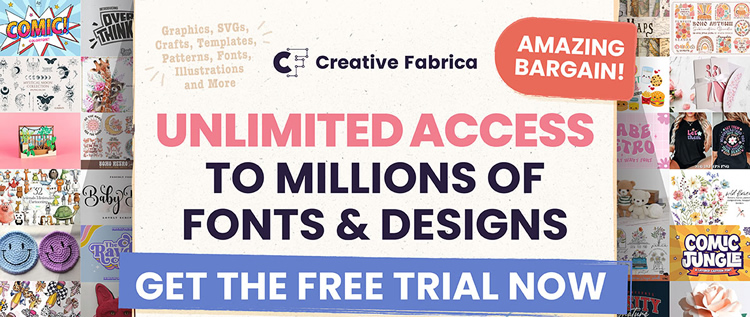How do I write a title for my listing on Etsy?

Etsy Pedia: How do I write a title for my listing??
TL;DR
Struggling to get your Etsy listings noticed? The secret might be simpler than you think – it’s all in the title! Learn how to craft magnetic titles that buyers can’t ignore, and search engines love. Discover unexpected keywords that drive traffic, understand what makes a title truly clickable, and unlock the hidden power of your product’s most important phrase. Ready to transform your sales? For an accelerated path to Etsy SEO mastery, consider exploring our Premium SEO Guide – it’s designed to help you master every aspect of your listings, starting with killer titles.
Introduction: Your Title – The First Impression That Counts
You’ve poured your heart and soul into creating a beautiful, unique product. It’s ready to find its forever home. But in the vast digital marketplace of Etsy, how do you ensure your masterpiece stands out? The very first thing a potential customer sees, and a critical factor for Etsy’s search algorithm, is your listing title. A poorly written title can leave your amazing creation buried, while a well-crafted one acts like a beacon, drawing in the right buyers. This article will demystify the art of writing effective Etsy listing titles, equipping you with the knowledge to attract more views, clicks, and ultimately, sales. We’ll cover everything from understanding search intent to leveraging powerful keywords and optimizing for both human eyes and AI.
Understanding the Power of Keywords
Keywords are the backbone of online search. For Etsy, they’re how buyers find you. Think of them as the breadcrumbs leading customers directly to your shop.
What are Keywords on Etsy?
Keywords are the words and phrases that shoppers type into the Etsy search bar when looking for products. They can be broad (e.g., “mug”) or highly specific (e.g., “personalized ceramic coffee mug with dog silhouette”).
The Role of Keywords in Your Title
Your listing title is prime real estate for keywords. Etsy’s search algorithm heavily weights the words in your title to determine where your listing appears in search results. The more relevant and accurately you use keywords, the higher your chances of being found.
Why This Matters
Using the right keywords in your title is fundamental to organic traffic. If buyers can’t find you, they can’t buy from you. It’s that simple.
Pro Tip: Think Like Your Customer
Before you even start writing, step into your ideal customer’s shoes. What would they search for to find a product like yours? Would they use a common term, a descriptive phrase, or a specific detail about its use or occasion?
Key Takeaways
- Keywords are the terms shoppers use to find products.
- Your listing title is the most crucial place for primary keywords.
- Understanding customer search behavior is key to keyword selection.
Step-by-Step Guide: Crafting a Killer Etsy Listing Title
Let’s break down the process of writing an effective Etsy listing title into manageable steps.
Step 1: Identify Your Core Keywords
Start with the most obvious and descriptive terms for your product.
- Product Type: What is it? (e.g., “necklace,” “planner,” “candle,” “print”)
- Key Features/Materials: What makes it special? (e.g., “sterling silver,” “undated,” “soy wax,” “watercolor”)
- Style/Aesthetic: What’s its vibe? (e.g., “minimalist,” “boho,” “vintage,” “modern”)
Example: For a hand-poured soy candle with lavender scent and a floral label, your core keywords might be: “soy candle,” “lavender candle,” “floral candle.”
Step 2: Research Long-Tail Keywords and Niche Terms
This is where you uncover opportunities that competitors might miss.
- Etsy Search Bar Suggestions: Start typing your core keywords into the Etsy search bar. See what suggestions pop up – these are terms real buyers are using.
- Competitor Analysis: Look at successful listings in your niche. What keywords are they using in their titles? Don’t copy them directly, but use their success as inspiration.
- Niche Communities & Forums: Explore relevant online groups (Facebook, Reddit) where your target audience hangs out. What language do they use to describe products?
- Keyword Research Tools: Tools like ETShop.ai and EverBee can be invaluable for uncovering high-volume, low-competition keywords. They provide insights into what shoppers are actively searching for and what your competitors are ranking for. If you’re serious about SEO, investing in a tool like this can dramatically speed up your research process.
Example (continued): Expanding on “lavender candle,” you might find long-tail keywords like “calming aromatherapy candle,” “gift for stressed friend,” “sleep aid candle,” “self-care gift box idea.”
Step 3: Structure Your Title for Readability and SEO
Etsy titles allow up to 140 characters. Use them wisely!
- Front-Load Important Keywords: Place your most important keywords at the beginning of your title. This signals relevance to both buyers and the algorithm.
- Be Descriptive and Specific: Avoid vague terms. The more specific you are, the more likely you are to attract buyers looking for exactly what you offer.
- Use Commas or Pipes for Separation: Commas (,) or pipes (|) can help break up phrases and make your title easier to read, but use them sparingly. Etsy’s algorithm generally treats words separated by these as distinct keywords.
- Consider the Occasion or Use: If your item is perfect for a specific holiday or event, include that. (e.g., “Wedding Guest Book,” “Birthday Gift for Mom”).
- Think About Your Target Audience: Who are you selling to? Use language that resonates with them.
Example Title Construction:
Let’s combine our lavender candle keywords.
- Draft 1 (Too simple): Lavender Candle
- Draft 2 (Better): Lavender Soy Candle, Floral Scent, Aromatherapy
- Draft 3 (More descriptive): Lavender Soy Candle, Aromatherapy Relaxation Candle, Floral Scent, Self-Care Gift for Her
- Draft 4 (Optimized): Lavender Soy Candle | Aromatherapy Relaxation | Floral Scent | Calming Sleep Aid | Self-Care Gift for Her | Hand Poured
This last example uses strong keywords upfront, includes specific benefits (relaxation, sleep aid), occasion (self-care gift), and a defining characteristic (hand-poured).
Step 4: Review and Refine
Read your title aloud. Does it make sense? Is it compelling?
- Avoid Keyword Stuffing: Don’t just cram keywords together without regard for grammar or sense. This can hurt your ranking and look spammy.
- Check for Typos and Grammatical Errors: A professional title builds trust.
- Does it answer “What is it?” and “Who is it for?”
Add a Screenshot Here:
(Imagine a screenshot showing an example of a well-optimized Etsy listing title field with annotations highlighting the placement of keywords, descriptive phrases, and separators.)
Why This Matters
A structured, keyword-rich title acts as a mini-advertisement, immediately telling potential buyers what your product is and why they should care.
Key Takeaways
- Prioritize core keywords at the beginning.
- Utilize descriptive long-tail keywords.
- Structure titles for clarity and search engine understanding.
- Avoid keyword stuffing and ensure grammatical correctness.
What Buyers and AI Are Looking For in Your Title
It’s a dual audience for your title: human shoppers and the ever-evolving AI systems that power search engines and platforms like Etsy.
User Psychology: The Click Factor
For human buyers, a title needs to be more than just descriptive; it needs to be enticing.
- Clarity: Can they instantly understand what the product is?
- Benefit: Does it hint at a solution or a desirable outcome (e.g., “Stress Relief,” “Perfect Gift,” “Unique Decor”)?
- Intrigue: Does it make them want to learn more? Sometimes a slightly unusual phrasing or a unique descriptor can spark curiosity.
- Relevance: Does it directly match what they were searching for?
AI/LLM Optimization: Understanding Search Intent
Next-generation AI systems and Etsy’s own algorithm are getting smarter. They’re not just looking for keywords; they’re trying to understand the intent behind a search query.
- Semantic Understanding: AI can now grasp synonyms and related concepts. So, “custom pet portrait” might also trigger listings for “dog owner gift” or “personalized animal art.”
- Contextual Relevance: The AI wants to ensure the listing truly matches the user’s need. This means your title should accurately reflect the product’s characteristics, intended use, and target audience.
- Natural Language Processing (NLP): Titles that read more like natural language, while still being keyword-rich, tend to perform well. Think of it as speaking directly to both the shopper and the intelligent systems.
Pro Tip: Don’t Forget the “Occasion” and “Recipient” Keywords
Many Etsy purchases are gifts or for specific life events. Including terms like “Birthday Gift,” “Anniversary Present,” “Housewarming Decor,” or “Gift for Mom” can dramatically increase your visibility for these types of searches. If your product is for a specific craft or hobby, incorporating that term is also vital. For instance, “SVG file for Cricut” or “knitting pattern for beginners.”
Key Takeaways
- Titles must appeal to human psychology (clarity, benefit, intrigue).
- AI seeks to understand search intent and contextual relevance.
- Natural language and specific use/recipient terms are beneficial for both.
Beyond the Title: Supporting Your Listing
While your title is paramount, it works in conjunction with other listing elements.
The Importance of Tags and Attributes
Think of your tags as additional keywords that further refine your listing’s searchability. Your attributes (like color, material, style) also play a significant role in Etsy’s search filtering.
- Maximize Your Tags: Use all 13 tags available. Think of synonyms, related terms, and longer phrases that buyers might use.
- Complete Attributes: Fill out as many relevant attributes as possible. This helps Etsy categorize your item and allows buyers to filter by these criteria.
Product Descriptions That Convert
Once a buyer clicks on your listing, your description takes over. It should expand on the promise of your title, offering more detail, benefits, and a clear call to action.
Photography That Sells
High-quality photos are non-negotiable. They showcase your product and reinforce the impression created by your title.
If you’re struggling to create compelling visuals, our Canva Crash Course for Etsy Sellers can equip you with the skills to design eye-catching graphics and photos.
Key Takeaways
- Tags and attributes are crucial for refining search results.
- Your description should elaborate on your title and convert viewers.
- Professional photography is essential for showcasing your product.
Internal & External Resources for Title Optimization
To truly master Etsy SEO, consider these helpful resources:
- Internal Link: For a deeper dive into optimizing your entire Etsy presence, explore our comprehensive guide on Organic Promotion on Etsy.
- Internal Link: Looking for broader strategies? Our Categories page offers a wealth of information across various Etsy selling topics.
- External Link: For official guidance directly from the source, visit the Etsy Seller Handbook which often features articles on SEO best practices.
- External Link: Understand how to best categorize your items with Etsy’s own guidelines on Selling on Etsy: Categories.
How to Write a Title for My Listing on Etsy (Platform Specific)
While the principles are universal, here’s how you practically apply them within the Etsy platform:
- Navigate to Your Listing: Go to your Etsy Shop Manager and select “Listings.” Click “Edit” on the listing you want to optimize.
- Locate the “Title” Field: This is typically at the very top of the listing editor, under your listing photos.
- Enter Your Optimized Title: Type or paste your carefully crafted title into this field. Pay attention to the character limit.
- Prioritize Keywords: Remember to put your most critical keywords first.
- Use Separators Wisely: Use commas (,) or pipes (|) to separate distinct phrases, but don’t overdo it.
- Save Your Changes: Scroll down and click “Save” or “Publish” to update your listing.
(Add a screenshot of the Etsy listing editor’s “Title” field here.)
Why This Matters
Applying these principles directly within the Etsy interface ensures your optimized title is live and ready to be discovered.
Key Takeaways
- The Etsy listing editor has a dedicated “Title” field.
- Prioritize keywords and use separators strategically.
- Always save your changes after optimizing.
Frequently Asked Questions About Etsy Listing Titles
Q1: How long should my Etsy listing title be?
A1: Etsy allows up to 140 characters. While you don’t have to use all of them, aim to get as close as possible by being descriptive and using relevant keywords. Shorter titles might miss out on valuable search terms.
Q2: Can I use special characters or emojis in my Etsy title?
A2: It’s generally best to avoid special characters and emojis in your main title. While some might display, they can sometimes interfere with how search engines and Etsy’s algorithm read your title. Stick to standard alphanumeric characters and punctuation like commas or pipes. Emojis can be more effectively used in other parts of your listing, like your shop announcement or description, if appropriate.
Q3: How often should I update my Etsy listing titles?
A3: Regularly review your listing performance. If a listing isn’t getting views, experiment with its title. Consider updating titles seasonally or when new trends emerge that your product might fit. A good rule of thumb is to revisit your top-performing and underperforming listings every few months.
Q4: Should I include my brand name in the title?
A4: If your brand name is well-known and people actively search for it, then yes, include it. If your brand name is new or not yet recognized, it’s often more beneficial to prioritize keywords that describe your product and what customers are searching for. You can mention your brand name later in the description.
Q5: What’s the difference between a title and tags on Etsy?
A5: The title is the primary identifier and has the most weight in search results. Tags are additional keywords that further help Etsy categorize your listing and understand its relevance to specific searches. Think of the title as your main headline and tags as supporting subheadings or descriptive details.
Conclusion: Your Title is Your Story’s Beginning
Crafting the perfect Etsy listing title is an art and a science. It’s your first handshake with a potential customer and your primary communication with Etsy’s search algorithm. By understanding your audience, researching your keywords diligently, and structuring your titles for both clarity and searchability, you can transform your listings from hidden gems into sought-after treasures. Don’t let a weak title hold back your amazing products. Invest the time, experiment with different approaches, and watch your visibility soar.
Ready to take your Etsy SEO to the next level and ensure your titles (and everything else!) are perfectly optimized? Consider our Etsy Listing Audit Service or the comprehensive Premium SEO Guide. These resources are designed to give you a significant edge in the competitive Etsy marketplace.
What are your biggest challenges with writing Etsy titles? Share your thoughts and questions in the comments below!
External Affiliate Links Used:
- Etsy Referral
- Creative Fabrica – Free Fonts
- Creative Fabrica – Free SVGs
- Creative Fabrica – Free Graphics
- Creative Fabrica – Unlimited Graphics
- ETShop.ai
- EverBee
- Creative Fabrica
Internal Links Used:
- Organic Promotion on Etsy
- Categories
- Premium SEO Guide
- Canva Crash Course for Etsy Sellers
- Etsy Listing Audit Service




